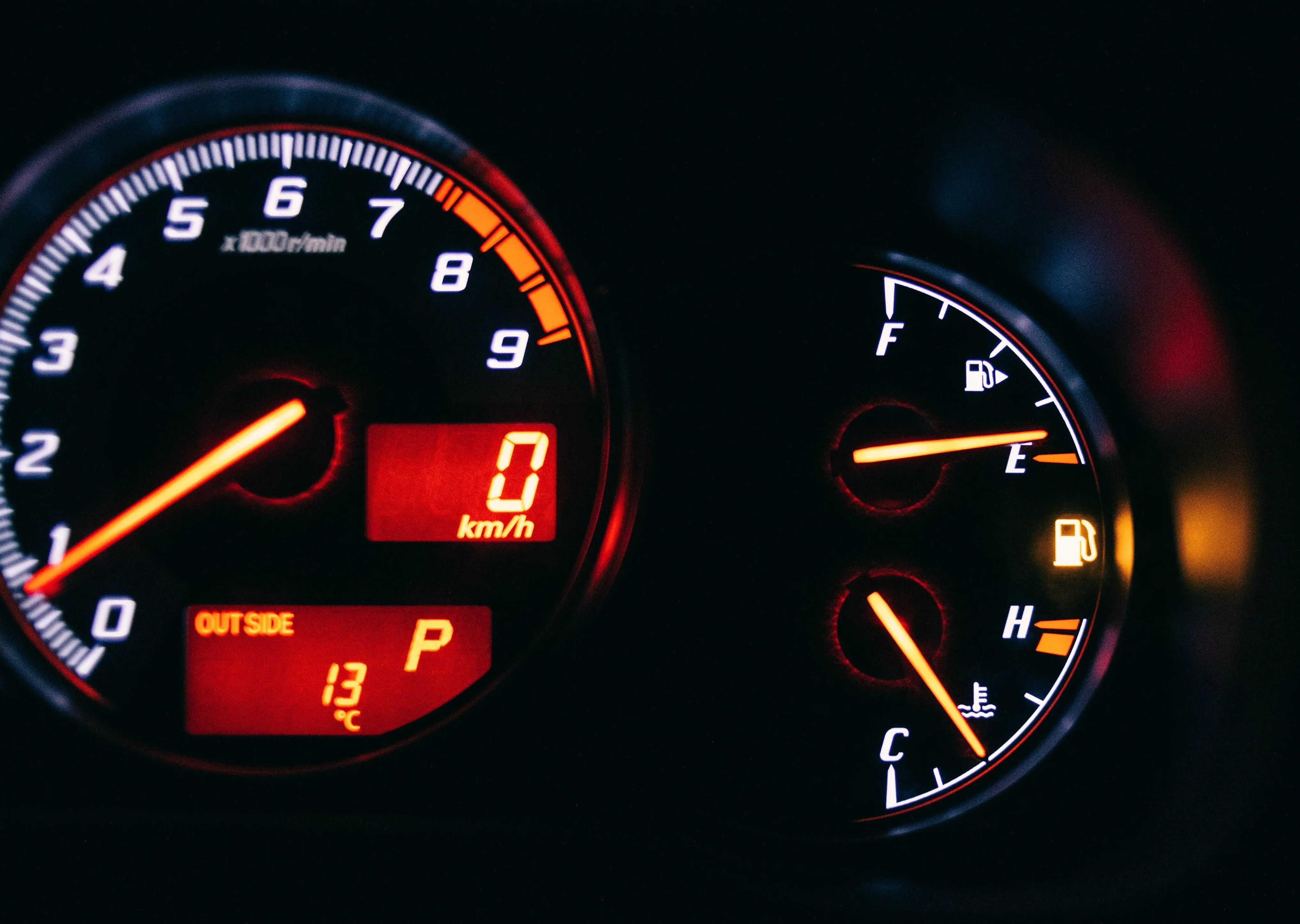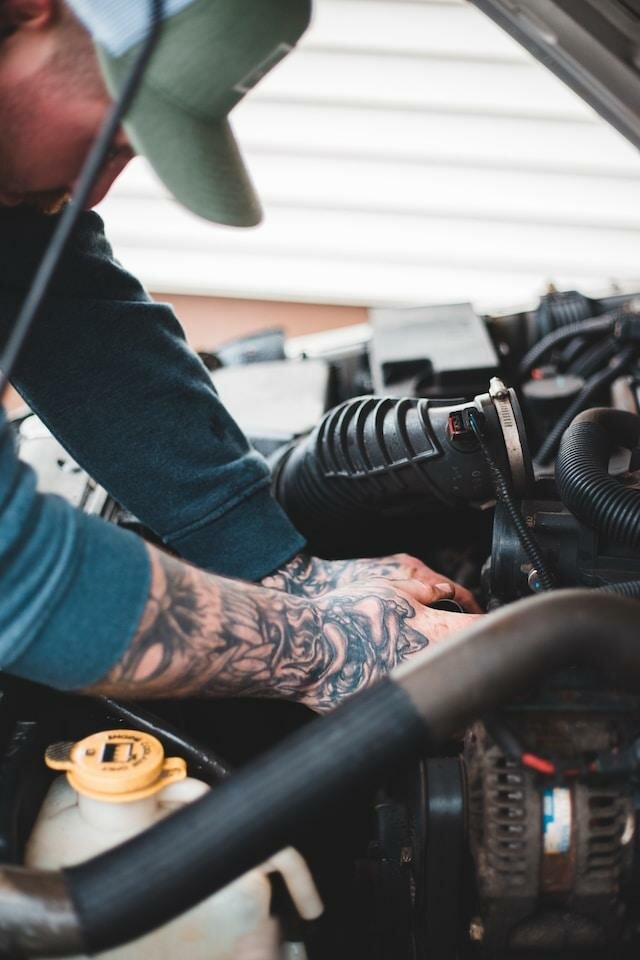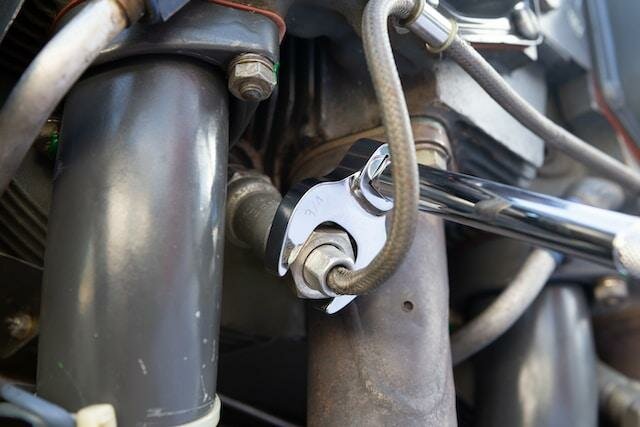What is a Fuel Pump?
Published Date: 22nd Jun 2023
 A car fuel pump, commonly known as a petrol pump, is a crucial component in the fuel delivery system of a vehicle. Its primary function is to transfer fuel from the fuel tank to the engine. The fuel pump is normally located inside the fuel tank and is powered by an electric motor.
A car fuel pump, commonly known as a petrol pump, is a crucial component in the fuel delivery system of a vehicle. Its primary function is to transfer fuel from the fuel tank to the engine. The fuel pump is normally located inside the fuel tank and is powered by an electric motor.
When you start your car, the fuel pump activates and creates pressure to deliver the fuel to the engine. It draws fuel from the tank and pushes it through the fuel lines towards the engine, mixing it with air and combusting it to generate power. The fuel pump ensures a steady and consistent fuel flow, maintaining the engine's performance and efficiency.
READ NEW CAR JARGON ARTICLES HERE
In addition to their primary function, modern fuel pumps are equipped with filters to remove impurities and debris from fuel, thus preventing engine contamination. Proper maintenance and regular inspections of fuel pumps are imperative to promote fuel system longevity and ensure seamless vehicle operation while avoiding fuel-related issues.
How Does a Car Fuel Pump Work?
 A car fuel pump, commonly called a petrol pump, is an essential component of a vehicle's fuel delivery system. Its usually located on or within the fuel tank; it is powered by an electric motor that creates pressure to propel fuel into the engine.
A car fuel pump, commonly called a petrol pump, is an essential component of a vehicle's fuel delivery system. Its usually located on or within the fuel tank; it is powered by an electric motor that creates pressure to propel fuel into the engine.
Upon receiving an electrical signal from the vehicle's computer, the fuel pump's motor engages, driving a piston or impeller within the pump assembly. The resulting movement creates a low-pressure area that draws fuel from the tank through a filter to remove impurities. The pump then pushes the purified fuel through the fuel lines for use by the engine.
The pump maintains a steady fuel flow, delivering it to the engine at the required pressure. This ensures an efficient combustion process when mixed with air in the engine's combustion chambers. The excess fuel not consumed by the engine is typically returned to the tank via a return line.
Proper fuel pump maintenance is crucial to ensure it functions correctly and maximises the vehicle's overall performance. This entails regular checks to detect any damage or blockages.
Here are some additional details about how a car fuel pump works:
- The fuel pump is commonly situated either in the actual fuel tank or in the engine compartment, depending on the vehicle.
- An electric motor, usually controlled by the car's computer, powers the fuel pump.
- The fuel pump employs a piston or impeller mechanism to generate pressure, which moves within the pump assembly.
- As it incorporates a filter, the fuel pump effectively removes impurities present in the fuel.
- The fuel pump ensures fuel delivery to the engine at the precise pressure required for optimal performance.
- Any extra fuel that remains unused by the engine is typically redirected back to the fuel tank via a return line.
Different Types of Car Fuel Pumps?
There are three main types of car fuel pumps: mechanical pumps, electric pumps, and direct injection. Each type has its characteristics and benefits.
 1 - Mechanical fuel pumps are the most common type of fuel pump. The engine's camshaft or crankshaft drives them, and they are usually located in the engine compartment. Mechanical fuel pumps are relatively simple and reliable but can be noisy.
1 - Mechanical fuel pumps are the most common type of fuel pump. The engine's camshaft or crankshaft drives them, and they are usually located in the engine compartment. Mechanical fuel pumps are relatively simple and reliable but can be noisy.
Benefits of mechanical fuel pumps:
- Simplicity: Mechanical pumps have a straightforward design and fewer components, making them relatively easy to maintain and repair.
- Reliability: They are less susceptible to electrical failures, making them a reliable choice for older vehicles or those operating in rugged conditions.
2 - Electric fuel pumps are becoming increasingly common. An electric motor powers them, typically located near the fuel tank. Electric fuel pumps are more efficient than mechanical fuel pumps, and they are also quieter. However, they can be more expensive to replace.
Benefits of electric fuel pumps:
- Precise fuel delivery: Electric pumps can provide a consistent and accurate fuel flow rate, which is important for fuel injection systems.
- Versatility: Electric pumps can be mounted in various locations, including the fuel tank or the engine compartment, offering flexibility in vehicle design.
- Enhanced performance: They can generate higher fuel pressures, improving engine performance and fuel efficiency.
3 - Direct injection pumps are specialised fuel pumps used in vehicles with direct fuel injection systems. These pumps operate at significantly higher pressures compared to conventional fuel pumps.
Benefits of direct injection pumps:
- Efficiency: Direct injection pumps deliver fuel directly into the combustion chamber, resulting in more efficient fuel atomisation and combustion and improved fuel economy and power.
- Precision: They can precisely control the fuel injection timing and duration, enhancing engine performance and reducing emissions.
- High-pressure capability: Direct injection pumps can handle the high fuel pressures required for efficient direct injection systems.
Which type of Fuel Pump is right for you?
The best type of fuel pump for you will depend on your needs and preferences. If you are looking for a simple and reliable fuel pump that is relatively inexpensive to replace, then a mechanical fuel pump may be a good option for you. If you want a more efficient and quiet fuel pump, an electric or direct injection pump may be better. However, these types of fuel pumps are more expensive to replace.
What are the potential issues with a Fuel Pump?
Fuel pumps can experience various issues that can impact the proper functioning of a vehicle's fuel system. Some potential problems with fuel pumps include:
 Fuel pump failure: Over time, the electric motor or mechanical components of the fuel pump can wear out or fail. This can result in a loss of fuel pressure, causing the engine to run poorly or not start.
Fuel pump failure: Over time, the electric motor or mechanical components of the fuel pump can wear out or fail. This can result in a loss of fuel pressure, causing the engine to run poorly or not start.- Fuel contamination: The fuel pump's filter can become clogged with dirt, debris, or rust particles present in the fuel. This can restrict fuel flow and lead to engine misfires, reduced performance, or stalling.
- Fuel pump relay or wiring issues: The fuel pump relay, which controls the power supply to the fuel pump or the associated wiring, can develop faults. This can prevent the fuel pump from receiving the necessary electrical current, resulting in fuel delivery problems.
- Fuel pump overheating: Continuous operation of the fuel pump under high loads or in hot conditions can cause it to overheat. Overheating can decrease efficiency and reduce fuel pressure and potential pump failure.
- Vapour lock: In certain circumstances, such as high temperatures or low fuel levels, the fuel in the lines can vaporise, causing a vapour lock. This disrupts fuel flow to the engine and can result in poor performance or engine stalling.
- Fuel pump noise: A failing or malfunctioning fuel pump may produce unusual noises, such as whining, buzzing, or excessive vibrations. These noises can indicate issues with the pump's internal components.
- Incorrect fuel pressure: A faulty fuel pressure regulator or a malfunctioning fuel pump can result in incorrect fuel pressure, either too high or too low. This can lead to poor engine performance, reduced fuel efficiency, or even damage.
Prevention and diagnosis
It's important to conduct regular maintenance checks on your vehicle, including inspecting the fuel system and replacing fuel filters in a timely manner. This helps prevent or identify issues with the fuel pump early on. However, if fuel pump problems are suspected, it's crucial to consult a qualified mechanic to diagnose and repair them. Neglecting to act on such issues can lead to more serious problems and costly repairs down the line! So, stay vigilant and keep your vehicle in top condition with regular maintenance.
How to Replace Your Car's Fuel Pump
Tools and Materials Needed:
- New fuel pump - The part number should be in your vehicle's manual.
- Socket set
- Wrench
- Fuel line disconnect tool
- Rags
- Gloves
- Safety glasses
Steps:
- Park the car on a level surface and engage the parking brake.
- Turn off the engine and disconnect your negative battery cable.
- Locate the fuel pump in most UK cars, typically inside or on the fuel tank.
- Safely disconnect the fuel lines from the old fuel pump, ensuring you have a container to catch any leaking fuel.
- Remove the old fuel pump from the fuel tank.
- Install the new fuel pump securely into the tank.
- Connect the fuel lines firmly to the new fuel pump.
- Reconnect the negative battery cable.
- Start the engine and carefully inspect for any fuel leaks.
- Dispose of any old fuel responsibly, following proper waste disposal guidelines.
Tips:
- Wear gloves and safety glasses throughout the process to protect yourself when handling fuel.
- Properly dispose of any old fuel to prevent environmental hazards.
- If you lack confidence or experience in replacing a fuel pump, you should take your car to a qualified mechanic for professional assistance.
How to Prolong the Life of Your Car's Fuel Pump
- Keeping the fuel tank full will help to cool the fuel pump and prevent it from overheating.
- Replace the fuel filter regularly. A clogged fuel filter will restrict fuel flow and strain the fuel pump.
- Avoid running the fuel tank low. When the fuel tank is low, the pump has to work harder to draw fuel from the bottom, which can cause premature wear on the pump.
- Avoid driving in hot weather. High temperatures can put extra strain on the fuel pump. If you live in a hot climate, avoid driving during the hottest part of the day.
- Have the fuel pump inspected regularly. If you notice any problems with your fuel pump, such as a loss of power or a whining noise, have it inspected by a qualified mechanic?
Here are the key takeaways:
- A fuel pump is a vital part of the fuel delivery system of a vehicle. It is responsible for transferring fuel from the fuel tank to the engine.
- There are three main types of car fuel pumps: mechanical pumps, electric pumps, and direct injection. Each type has its characteristics and benefits.
- The most common type of fuel pump is the electric pump. Electric pumps are more efficient than mechanical fuel pumps, and they are also quieter. However, they can be more expensive to replace.
- Fuel pumps can experience various issues that can impact the proper functioning of a vehicle's fuel system. Some potential problems with fuel pumps include fuel pump failure, fuel contamination, fuel pump relay or wiring issues, fuel pump overheating, vapour lock, fuel pump noise, and incorrect fuel pressure.
- Regular maintenance, including fuel system inspections and timely replacement of fuel filters, can help prevent or identify potential fuel pump issues.
- If you notice any problems with your fuel pump, such as a loss of power or a whining noise, have it inspected by a qualified mechanic?
Find Cheap New Car Deals
Discover your perfect car with the guidance of our team of expert sales professionals. From start to finish, we'll work with you to find the ideal vehicle to match your needs. Contact UK Car Discount today and explore our wide selection of premier vehicles.
Call us today at 0161 946 3500 to discuss how we can guide you with your next New Car Deal.
READ THE LATEST NEW CAR JARGON ARTICLES HERE
